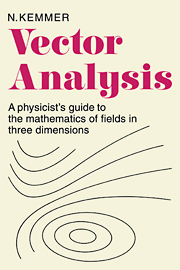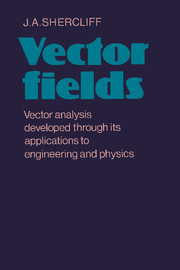Vector Analysis
Vector analysis provides the language that is needed for a precise quantitative statement of the general laws and relationships governing such branches of physics as electromagnetism and fluid dynamics. The account of the subject is aimed principally at physicists but the presentation is equally appropriate for engineers. The justification for adding to the available textbooks on vector analysis stems from Professor Kemmer's novel presentation of the subject developed through many years of teaching, and in relating the mathematics to physical models. While maintaining mathematical precision, the methodology of presentation relies greatly on the visual, geometric aspects of the subject and is supported throughout the text by many beautiful illustrations that are more than just schematic. A unification of the whole body of results developed in the book - from the simple ideas of differentiation and integration of vector fields to the theory of orthogonal curvilinear coordinates and to the treatment of time-dependent integrals over fields - is achieved by the introduction from the outset of a method of general parametrisation of curves and surfaces.
Product details
March 1977Paperback
9780521290647
272 pages
225 × 150 × 15 mm
0.3kg
Available
Table of Contents
- Introduction
- 1. Summary of vector algebra
- 2. The geometrical background to vector analysis
- 3. Metric properties of Euclidean space
- 4. Scalar and vector fields
- 5. Spatial integrals of fields
- 6. Further spatial integrals
- 7. Differentiation of fields. Part I The gradient
- 8. Differentiation of fields. Part II The curl
- 9. Differentiation of fields. Part III The divergence
- 10. Generalisation of the three principal theorems and some remarks on notation
- 11. Boundary behaviour of fields
- 12. Differentiation and integration of products of fields
- 13. Second derivatives of vector fields
- elements of potential theory
- 14. Orthogonal curvilinear coordinates
- 15. Time-dependent fields
- Exercises
- Index.








